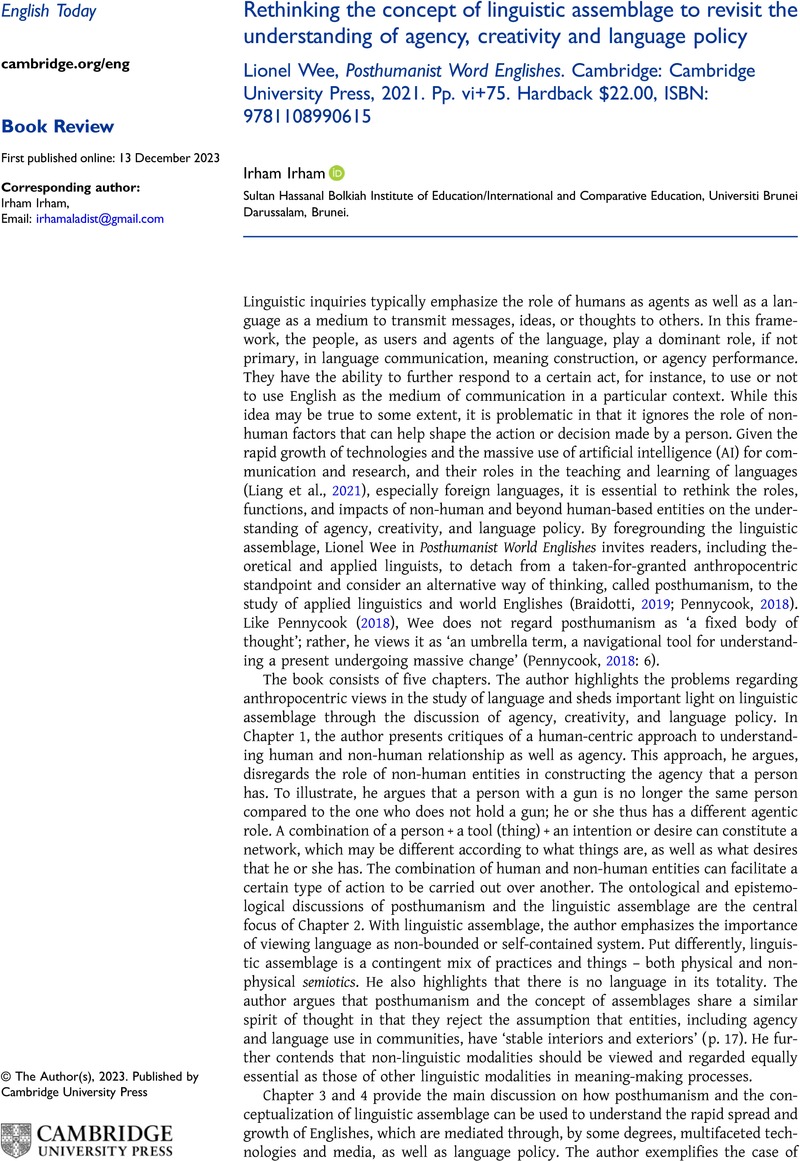No CrossRef data available.
Article contents
Rethinking the concept of linguistic assemblage to revisit the understanding of agency, creativity and language policy - Lionel Wee, Posthumanist Word Englishes. Cambridge: Cambridge University Press, 2021. Pp. vi+75. Hardback $22.00, ISBN: 9781108990615
Review products
Lionel Wee, Posthumanist Word Englishes. Cambridge: Cambridge University Press, 2021. Pp. vi+75. Hardback $22.00, ISBN: 9781108990615
Published online by Cambridge University Press: 13 December 2023
Abstract
An abstract is not available for this content so a preview has been provided. Please use the Get access link above for information on how to access this content.

- Type
- Book Review
- Information
- Copyright
- Copyright © The Author(s), 2023. Published by Cambridge University Press
References
Braidotti, R. 2019. ‘A theoretical framework for the critical posthumanities.’ Theory, Culture & Society, 36(6), 31–61.10.1177/0263276418771486CrossRefGoogle Scholar
Liang, J. C., Hwang, G. J., Chen, M. R. A. & Darmawansah, D. 2021. ‘Roles and research foci of artificial intelligence in language education: An integrated bibliographic analysis and systematic review approach.’ Interactive Learning Environments, 31(7), 4270–4296.Google Scholar



